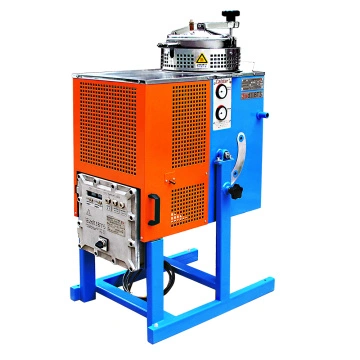Some Known Details About Analysis of an accident at a solvent recovery plant - PubMed


Solvent Recovery and Waste Gas Purification - messergroup.com
Some Known Incorrect Statements About Solvent Vapor Recovery – NUCON International Inc.
This field of adsorption is controlled by activated carbon adsorbents,116 however molecular screen zeolites are also employed. 117 Polymeric adsorbents are hardly ever used in such procedures, generally because of their high rate compared with triggered carbon and zeolites. 118 The choice of adsorbent regrowth technique has a significant effect on the quality of the recuperated solvent. Taking a look at the efficiency and applicability of numerous regeneration procedures has actually been the aim of a number of research studies. 112,119 A typical system utilizing activated carbon adsorption to recuperate solvents from air emissions is revealed in Fig. 3. 15.11. Steam regeneration is employed to strip solvents from the activated carbon followed by condensation of the steam/solvent mixture through cooling.

Solvent Recovery and Waste Gas Purification - messergroup.com
Figure 3. 15.11. The Latest Info Found Here using triggered carbon adsorption to recover solvents from air emissions. Steam regrowth is employed to strip solvents from the triggered carbon followed by condensation of the steam/solvent mix through cooling. Ultimately the solvent layer is separated by easy decantation. The twin-bed arrangement permits continuous operation. Besides waste gases, industrial wastewaters can likewise be polluted by considerable amount of organic solvents. Activated carbon or charcoal beds are commonly employed in water treatment as extra systems after air-stripping processes. 96 However, for the recovery of less unpredictable solvents, adsorption is the most reasonable option as the main unit.

g., membrane fabrication) produce a considerable amount of wastewater contaminated by high-boiling, polar, aprotic solvents. Razali et al. examined different adsorbents regarding their capability to recuperate and in situ reuse such waste water. 120 Fig. 3. 15.12 shows the adsorption capacity of different adsorbents for the polar, aprotic solvents N,N-dimethylformamide (DMF) and NMP. The continuous wastewater treatment process based upon MIP7 decreased the waste generation by 99%, and it was demonstrated to be a reliable solution to alleviate organic solvent contamination to 10 ppm level, allowing either safe disposal or in situ reuse. Figure 3. 15.12. Adsorption capability of water filtration materials from various adsorbent classes: imprinted polymers, charcoals, metal-organic frameworks (MOFs), zeolites, graphene-based products, and polymers of intrinsic microporosity.
